Intro to Book
Hello Readers,
When I think back to books or stories that kick-started my imagination into high gear, the ones I most remember are magical. I don’t mean to say they contain magic, I mean, there is a kind of magic to the story. The stories that enchant us and take us to new worlds seem to have a magic all of their own, whether or not the author intended this effect. I feel like Wendy, Michael, and John, getting swept away to Neverland off on a grand adventure. These kinds of stories affect us, change us, and spark something in our imagination that allows us to soar, like fairy dust in Peter Pan. That is not the book we’ll be talking about today, but it is a great read for your middle-grade reader, or just because. But Peter Pan does set something of a tone for the adventure book, or the fantasy novel because, like the Darling children, it sweeps you away. This is exactly what the series of books we’ll talk about did to me when I was young. That’s right, we’re taking a back seat to the present and headed to the past to discuss one of my favorite series I read as a teenager.
Today we will be looking at The Moving Castle series by Diana Wynne Jones. Originally published nearly 40 years ago, it is a book series that captivated the imaginations of many youths of the 90s. Then, it was revitalized in the early 2000s with a movie made by Miyazaki and Studio Ghibli and became popularized in the US. The movie separates itself from the book, especially in its ending, though the beginning is more or less the same. It was the movie that got my attention at the ripe young age of 15, and I have been captivated by it and the book series ever since.
Summary
There are three books in this series. Howl’s Moving Castle, published in 1986. Castle in the Air, published in 1990. And finally, House of Many Ways, published in 2008.
In Howl's Moving Castle, we meet the characters who are throughout the series but often not the main characters. Sophie, an 18-year-old who does not think much of herself, and even less of any future endeavors, as she has become the inheritor of a hat shop is soon flung into a world of witches and wizards all of whom have terrible reputations, while her younger sisters are off doing more grand and adventurous things. She is cursed to manage the hat shop. The responsible thing for the eldest child to do. Then, she is cursed with age by a witch for no reason and looks like a granny instead of her 18-year-old self, which she takes with a stride finally looking the age she felt anyway. Having nothing better to do she goes on an adventure to try and potentially break the curse. She meets many people throughout the journey with Howl and his moving castle which turns out to have the ability to open a door to several different locations. Key characters would be Howl the Wizard and Calcifer the Fire Demon. This book has all the feels of a grand adventure. Magic, fantastic worlds and inventions, romance, and battle scenes. All appropriate for ages 8 and up I would say. Though, ideally suited for 12-year-olds.
Sophie is the central character. It is told from her perspective though not really in a first-person point of view. It simply revolves around her. Howl would likely be the second main character. A deft but broody, young, and cowardly wizard who wishes only to be left alone. Sophie however does not and hijinks ensue. Then there is Calcifer. The Fire Demon who has an unnamed but nasty deal with Howl and helps him with his magic, and Howl’s apprentice Michael who looks after the broody wizard. As you might imagine, this group has some fun adventures as Sophie tries to piece together the mystery surrounding the wizard Howl and the geopolitical
In the next book, Castle in the Air, we are in another land in the same world. While Howl’s country and area resemble Europe, in this book we are in the Middle East in the land of Sultans. Abdullah is the main character and when he was born a prophecy was spoken over him that has yet to come true and Abdullah doubted it ever would being only a young merchant of carpets. His age is unspecified, and his trade is forever doomed to be boring. But Abdullah prides himself, as all the people of Zanzib do, on making great deals, flattery, and sometimes outright lies. He does this so well that he saves and hordes a little stash of money to make something of himself. Then a traveling salesman sells Abdullah a flying carpet but Abdullah can’t get it to work. Then he starts to have strange dreams that send him on a whirlwind adventure all over the world to rescue and win the heart of the princess from these strange dreams, Flower-in-the-Night. And accompanied by a genie whose ways are quite opposite to Abdullah’s. In his journey, he meets many a character including some that come from the first book like Howl and Sophie.
Abdullah is the main character and it follows his journey. This was annoying to me at first as I loved Howl and Sophie and the cast of characters from the first story. But let me say, Abdullah is a charming character and swayed my heart so that I found I wanted more of his story as well by the end. The next main character is probably the genie who is a hoot in a bottle. Then Flower-in-the-Night is probably the third most important character in the story. All of them are amazing written characters and magical in their own rights.
Finally, there is House of Many Ways, a book with so much magic, intentionality, and playfulness that it is absolutely wonderful. The book revolves around Charmain, a teenager of unspecified age, who is forced to take care of her great-uncle’s house who is ailing due to some poisoning and must be cared for by the elves. It is a magic house and her uncle leaves all sorts of clues lying around for her to figure out how to best use the house. Like Howl’s castle, the house seems to have doorways that open to many locations. Many times, his voice pops up out of nowhere and startles her.
She finds some of his magic books and begins to practice magic when another teenager arrives. He was to be her great-uncle’s apprentice but ends up being quite clumsy and breaking things that Charmain must fix. Not only that, but a sinister figure is somewhere in the valley, and something terrible that is happening in the kingdom. Charmian, Peter, and Waif, the loveable pet of Great-Uncle William, must solve the problems of the house, the kingdom, and the sinister figure. Howl and Sophie are back and the group works together to figure out everything before all is lost.
The cast of characters from this book is amazing. Simply amazing. There are of course Sophie and Howl who play background characters, and Howl is up to his usual antics as seen in the first two books which makes the whole story a riot. But then there is sweet Charmain. A lover of books and peace who gets embroiled in magic.
Seems like a trope that happens in a lot of books I like to read. Perhaps being a book lover I secretly wish to be wrapped up in some magical adventure. Or perhaps it is already like my own story being a book lover and peace lover and finding adventure in my adventure-loving wife and our story, that I feel such a connection to such characters. I digress.
Charmain is the main character and everything is told from her point of view. She is a sweet and charming teenager who sometimes does act teenagerish. Especially in her dealings with Peter whom she has zero patience for.
Peter is a great secondary character. He is bumbling and clumsy and messes up the orderliness of Charmain who despite her lack of interest in her Great-Uncle or magic, is trying her best to keep the place shipshod. Yet, Peter is charming in his own way. Brave and sure of himself, despite knowing how clumsy he can be.
Analysis
This is a short series but the books are quite long themselves for the average middle-grade reader. I would put this on the advanced 10-year-old and above list for readability. Though there are middle-grade hijinks in all of the books, the gaps between them and character building really level this book up. As for appropriateness, it is very appropriate. There is a bit of romance between characters, but it is not anything inappropriate and can be cute. In fact, most of the time the interest between characters seems rather like dislike than any sort of interest. All-in-all, it is a great series, not too difficult to read aloud, but it would take some time and feels kind of old-timey, which I personally think lends to its magicalness.
Things to watch out for would be magic, of course. It seems that my reviews have entirely been of fantasy novels, which are among my favorites, so magic is going to exist in these worlds. The broodiness I mentioned about Howl earlier could be called depression or despondency, over the loss of love. Which is certainly a negative, and his character may overall be negative as he is rather immature. Then there is Abdullah, who flatters and lies, which are negatives and things we will discuss in a bit.
Major Themes:
Meanwhile, the major themes in this series may be hard to pin down since we are covering more than one book. So, I’m going to try and break down the books individually to their smallest point. It is reductionist but I think it will help sort it out. Howl’s Moving Castle could be argued to be redemption. Castle in the Air could be argued to be love. And House of Many Ways could be argued to be responsibility. Though these themes could be seen in all of the novels, I think each of these could be argued as the main underlying theme for each book. But this is a huge understatement of the themes at large.
For the redemption portion of the stories. Many characters have some sort of flaw that holds them back or gets in their way, and so each of their stories can be seen as redeeming. For love, this is a theme that is throughout the series and is like those old fairy tales about love conquering all. And as responsibility goes, both Sophie and Charmain personify this responsibility in a take-charge manner. Not fully feminist, but not feminine either.
Writing Style:
As previously stated, there is an old-timey feel to it. I don’t know how else to describe it. It flows but it is magical itself. It isn’t difficult to read but there is a feel for it that I don’t know how to describe. It is appropriate age-wise for an eight-year-old. But length-wise and concept-wise might be a little beyond that age group. I always advocate for reading up but would recommend this for the 10-year-old and up. Again, it is not weary to try and read aloud, if you wished to read it to your younger children. There is not much violence in the stories, though, in Castle in the Air there is a bit more. And in House of Many Ways, there is a creature who plants its eggs into people. They are not disturbing though and most of the writing would leave its reader joyful not anxious.
Plot:
The plot for each book may be the most difficult part to follow. Mostly because of the many changes in the setting. Each book spans several different locations. But the storyline is easy enough. Sophie wants to be free of her curses, Abdullah desires to rescue and win the heart of his love, and Charmain must maintain order and save the kingdom. Easy peasy. But it is the gaps that are so hard to follow at times. The scenes and settings change, it is difficult for younger readers to keep pace and be entertained continually. But the crazy that happens, happens often enough and should keep most avid readers engaged.
Gospel Connections:
Well, this is a doozy. The Gospel connections in this series are harder to find in some ways. One, because there is some distance between when I read them last and am offering insights into these books, and two because I am so entertained by them that I get lost in the stories and do not think on deeper levels as I am reading. I think the most blatant connections are the redemption stories, however, and I am a sucker for a good redemption story. I am going to give a bit away here, but I think the best redemption story is that of Howl. He continues to appear throughout the series so I don’t feel that I am revealing too much and you’ll just have to read it or have your child read it to know how good it is.
The other connections of love and responsibility can also be fleshed out. Though love is often that pining love in these books, there is a deep love that goes beyond just pining after someone. Most often seen in the side characters or the results of the actions of our heroines and heroes.
Then there are the negatives. As always, so far, there is magic. Listen to my other podcasts to hear more about this. It’s there and beware, or don’t, and have a good discussion with your kid about magic. However, this goes deeper than the level of magic we’ve seen thus far in the books I recommended. There is also a Fire Demon, Calcifer and he made a deal with a human. This one admittedly is hard to justify. He’s a semi-main character in the first book. The deal on the other hand does not serve either person well and there is a good resolve by the end. It is not a demonic personality in the normal sense like he’s from hell and serves satan, but still, that is what he is called.
Lastly, there are some solid personalities to not follow, and Jones often rationalizes bad behavior if it serves a good intent in the end. I don’t agree with this and would argue that the bad behavior in the characters should be rectified rather than justified, but it is entertaining and thought-provoking. Some of it is just bad behavior, some may be sinful. But a lot of it is gray and hard to tell.
Social Impact:
Then there are the geopolitical situations in the books. Jones covers a lot of kingdoms in various states of war and negotiations. Much of it seems drawn from Europe and the Middle East and can be talked about in the situations we see in the world today. Also, there are the romantic elements. These are very funny, highly unlikely situations and pair-ups, and highly idealized. Just note that this is a complete fantasy and so are these relationships. They are cute though, and sweet, and very appropriate.
Final Thoughts
Again, I cannot recommend this series highly enough. It is perfect for the 10 to 14-year-old age range. They can read the higher word count books and appreciate the complexity, ridiculousness, and slightly older themes. Not older as appropriateness goes, older as in understanding. They are magical books, written magically, and you feel transported into their world. It will keep any reader who enjoys such books interested, especially with such delightful characters and wonderful shenanigans. I’ve yet to read outside this series of Diana Wynne Jones, but plan on picking up a few of her other books too because this series had me hooked, and want to get my kids reading this series and potentially reading more of her books. Next episode I’ll be talking to my daughter as we discuss a time when she finally trusted me and read The Wingfeather Saga and loved it.
Until next time, have a great read.


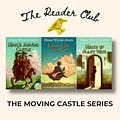



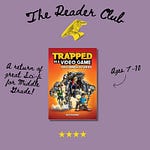
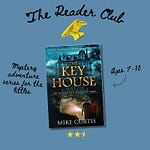


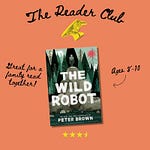
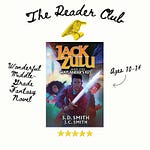


The Moving Castle Series